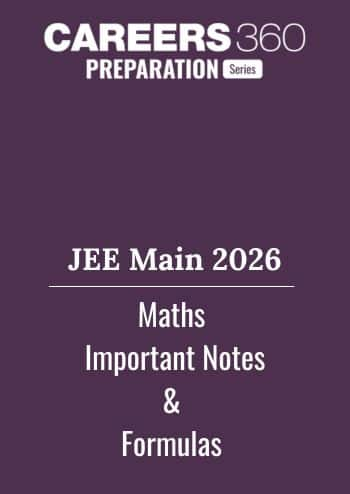Cross product - Practice Questions & MCQ
Quick Facts
-
Vector (or Cross) Product of Two Vectors is considered one the most difficult concept.
-
Vector Product in Terms of Components is considered one of the most asked concept.
-
106 Questions around this concept.
Solve by difficulty
Let and
. If
is a unit vector such that
and
then
is equal to:
If and the angle between
is equal to
are two vectors and
is a vector such that
then
Latest: Free All-India JEE Main 2026 Mock Test - Attempt Now
JEE Main Sample Papers: Physics | Chemistry | Maths | Top 30 Repeated Questions
JEE Main QP & Mock: Previous 10 Year Questions | Chapter Wise PYQs | Mock test Series
JEE Main Most Scoring Concept: January 2025 Session | April 2025 Session | Overall
Let $\vec{a}, \vec{b}$ and $\vec{c}$ be three vertices such that $|\vec{a}|=\sqrt{3},|\vec{b}|=5, \vec{b} \cdot \vec{c}=10$ and the angle between $\vec{b}$ and $\vec{c}$ is $\frac{\pi}{3}$. If $\rightarrow \vec{a}$ is perpendicular to the vector $\vec{b} \times \vec{c}$, then $|\vec{a} \times(b \times \vec{c})|_{\text {is equal }}$ to $\qquad$
Let the position vector S of point A and B be $\hat{i}+\widehat{j}+\widehat{k}$ and $\widehat{2 i}-\widehat{j}-\widehat{3 k}$ respectively. A point 'p' divides the line segment AB intervally in the ratio $\lambda: 1(\lambda, 0)$ if $O$ is the origin and $\overrightarrow{O B} \cdot \overrightarrow{O P}-3|\overrightarrow{O A} \times \overrightarrow{O P}|^2=6$ then $\lambda$ is equal to $\qquad$
Let $\vec{a}$ and $\vec{b}$ be two vectors such that $|\vec{b}|=1$ and $|\vec{b} \times \vec{a}|=2$. Then $|(\vec{b} \times \vec{a})-\vec{b}|^2$ is equal to
Let $\overrightarrow{\mathrm{a}}=-5 \hat{\mathrm{i}}+\hat{\mathrm{j}}-3 \hat{\mathrm{k}}, \overrightarrow{\mathrm{b}}=\hat{\mathrm{i}}+2 \hat{\mathrm{j}}-4 \hat{\mathrm{k}}$ and $\overrightarrow{\mathrm{c}}=(((\overrightarrow{\mathrm{a}} \times \overrightarrow{\mathrm{b}}) \times \hat{\mathrm{i}}) \times \hat{\mathrm{i}}) \times \hat{\mathrm{i}}$. Then $\overrightarrow{\mathrm{c}} \cdot(-\hat{\mathrm{i}}+\hat{\mathrm{j}}+\hat{\mathrm{k}})$ is equal to :
Vector product is :
$(3\hat{i}\times 9\hat{j})+(7\hat{k}\times 3\hat{k})=$
$\hat{i}\times (2\hat{i}\times \hat{j})$ is along which axis :
Concepts Covered - 2
The vector product of two nonzero vectors $\overrightarrow{\mathbf{a}}$ and $\overrightarrow{\mathbf{b}}$, is denoted by $\overrightarrow{\mathbf{a}} \times \overrightarrow{\mathbf{b}}$ and defined as,
$
\overrightarrow{\mathbf{a}} \times \overrightarrow{\mathbf{b}}=|\overrightarrow{\mathbf{a}}||\overrightarrow{\mathbf{b}}| \sin \theta \hat{\mathbf{n}}
$
where $\theta$ is the angle between $\overrightarrow{\mathbf{a}}$ and $\overrightarrow{\mathbf{b}}, 0 \leq \theta \leq \pi$ and $\hat{\mathbf{n}}$ is a unit vector perpendicular to both $\overrightarrow{\mathbf{a}}$ and $\overrightarrow{\mathbf{b}}$, such that $\overrightarrow{\mathbf{a}}, \overrightarrow{\mathbf{b}}$ and $\hat{\mathbf{n}}$ form a right hand system.


Observe that, the direction of $\overrightarrow{\mathbf{a}} \times \overrightarrow{\mathbf{b}}$ is opposite to that of $\overrightarrow{\mathbf{b}} \times \overrightarrow{\mathbf{a}}$ as shown in the figure.
i.e. $\overrightarrow{\mathbf{a}} \times \overrightarrow{\mathbf{b}}=-\overrightarrow{\mathbf{a}} \times \overrightarrow{\mathbf{b}}$
Properties of Vector Product
1. $\vec{a} \times \vec{b}$ is a vector.
2. Let $\vec{a}$ and $\vec{b}$ be two nonzero vectors. Then $\vec{a} \times \vec{b}=\overrightarrow{0}$ if and only if $\vec{a}$ and $\vec{b}$ are parallel (or collinear) to each other, i.e.,
$
\vec{a} \times \vec{b}=\overrightarrow{0} \Leftrightarrow \vec{a} \| \vec{b}
$
In particular, $\vec{a} \times \vec{a}=\overrightarrow{0}$ and $\vec{a} \times(-\vec{a})=\overrightarrow{0}$, since in the first situation, $\theta=0$ and in the second one, $\theta=\pi$.
3. If $\theta=\frac{\pi}{2}$, then $\vec{a} \times \vec{b}=|\vec{a}||\vec{b}|$.
4. From the property 2 . and 3 .
$
\begin{aligned}
& \hat{i} \times \hat{i}=\hat{j} \times \hat{j}=\hat{k} \times \hat{k}=\overrightarrow{0} \\
& \hat{i} \times \hat{j}=\hat{k}, \quad \hat{j} \times \hat{k}=\hat{i}, \quad \hat{k} \times \hat{i}=\hat{j} \\
& \text { and also, } \\
& \hat{j} \times \hat{i}=-\hat{k}, \quad \hat{k} \times \hat{j}=-\hat{i} \text { and } \quad \hat{i} \times \hat{k}=-\hat{j}
\end{aligned}
$
5. Vector product is not associative,
$
\text { i.e. } \quad \vec{a} \times \vec{b} \neq \vec{b} \times \vec{a}
$
6. If $\vec{a}$ and $\vec{b}$ are two vectors and $m$ is a scalar, then
$
m \vec{a} \times \vec{b}=m(\vec{a} \times \vec{b})=\vec{a} \times m \vec{b}
$
7. If $\vec{a}$ and $\vec{b}$ are two vectors and $m, n$ are scalars, then $m \vec{a} \times n \vec{b}=m n(\vec{a} \times \vec{b})=m(n \vec{a} \times \vec{b})=n(m \vec{a} \times \vec{b})$
8. For any three vectors $\vec{a}, \vec{b}$ and $\vec{c}$, we have
(i) $\vec{a} \times(\vec{b}+\vec{c})=\vec{a} \times \vec{b}+\vec{a} \times \vec{c}$
(ii) $\vec{a} \times(\vec{b}-\vec{c})=\vec{a} \times \vec{b}-\vec{a} \times \vec{c}$
If $\overrightarrow{\mathbf{a}}=a_1 \hat{\mathbf{i}}+a_2 \hat{\mathbf{j}}+a_3 \hat{\mathbf{k}}$ and $\overrightarrow{\mathbf{b}}=b_1 \hat{\mathbf{i}}+b_2 \hat{\mathbf{j}}+b_3 \hat{\mathbf{k}}$, then their cross product given by
$
\vec{a} \times \vec{b}=\left|\begin{array}{lll}
\hat{i} & \hat{j} & \hat{k} \\
a_1 & a_2 & a_3 \\
b_1 & b_2 & b_3
\end{array}\right|
$
Proof:
$
\begin{aligned}
\vec{a} \times \vec{b}= & \left(a_1 \hat{i}+a_2 \hat{j}+a_3 \hat{k}\right) \times\left(b_1 \hat{i}+b_2 \hat{j}+b_3 \hat{k}\right) \\
= & a_1 b_1(\hat{i} \times \hat{i})+a_1 b_2(\hat{i} \times \hat{j})+a_1 b_3(\hat{i} \times \hat{k})+a_2 b_1(\hat{j} \times \hat{i}) \\
& +a_2 b_2(\hat{j} \times \hat{j})+a_2 b_3(\hat{j} \times \hat{k})+a_3 b_1(\hat{k} \times \hat{i})+a_3 b_2(\hat{k} \times \hat{j})+a_3 b_3(\hat{k} \times \hat{k}) \\
= & a_1 b_2(\hat{i} \times \hat{j})-a_1 b_3(\hat{k} \times \hat{i})-a_2 b_1(\hat{i} \times \hat{j}) \\
& ++a_2 b_3(\hat{j} \times \hat{k})+a_3 b_1(\hat{k} \times \hat{i})-a_3 b_2(\hat{j} \times \hat{k})
\end{aligned}
$
Using the fact that,
$
\begin{aligned}
& \hat{i} \times \hat{i}=\hat{j} \times \hat{j}=\hat{k} \times \hat{k}=0 \\
\text { and, } & \hat{i} \times \hat{k}=-\hat{k} \times \hat{i}, \hat{j} \times \hat{i}=-\hat{i} \times \hat{j} \text { and } \hat{k} \times \hat{j}=-\hat{j} \times \hat{k} \\
= & a_1 b_2 \hat{k}-a_1 b_3 \hat{j}-a_2 b_1 \hat{k}+a_2 b_3 \hat{i}+a_3 b_1 \hat{j}-a_3 b_2 \hat{i} \\
(\text { as } \hat{i} \times & \hat{j}=\hat{k}, \hat{j} \times \hat{k}=\hat{i} \text { and } \times k+\hat{j}) \\
= & \left(a_2 b_3-a_3 b_2\right) \hat{i}-\left(a_1 b_3-a_3 b_1\right) \hat{j}+\left(a_1 b_2-a_2 b_1\right) \hat{k} \\
= & \left|\begin{array}{lll}
\hat{i} & \hat{j} & \hat{k} \\
a_1 & a_2 & a_3 \\
b_1 & b_2 & b_3
\end{array}\right|
\end{aligned}
$
The angle between Two Vectors
If $\Theta$ is the angle between the vectors $\overrightarrow{\mathbf{a}}$ and $\overrightarrow{\mathbf{b}}$, then
$
\sin \theta=\frac{|\overrightarrow{\mathbf{a}} \times \overrightarrow{\mathbf{b}}|}{|\overrightarrow{\mathbf{a}}||\overrightarrow{\mathbf{b}}|}
$
Vector perpendicular to the plane of two given vectors
The unit vector perpendicular to the plane of $\overrightarrow{\mathbf{a}}$ and $\overrightarrow{\mathbf{b}}$ is $\frac{(\overrightarrow{\mathbf{a}} \times \overrightarrow{\mathbf{b}})}{|\overrightarrow{\mathbf{a}} \times \overrightarrow{\mathbf{b}}|}$.
Also note that $-\frac{(\overrightarrow{\mathbf{a}} \times \overrightarrow{\mathbf{b}})}{|\overrightarrow{\mathbf{a}} \times \overrightarrow{\mathbf{b}}|}$ is also a unit vector perpendicular to the plane of $\overrightarrow{\mathbf{a}}$ and $\overrightarrow{\mathbf{b}}$.
Vectors of magnitude ' $\lambda$ ' perpendicular to the plane of $\overrightarrow{\mathbf{a}}$ and $\overrightarrow{\mathbf{b}}$ are given by
Study it with Videos
"Stay in the loop. Receive exam news, study resources, and expert advice!"














